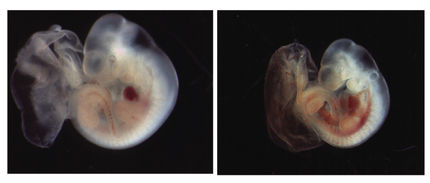Mechanism of cell death unraveled
Perspectives for treating degenerative and inflammatory diseases
Advertisement
Researchers at VIB and Ghent University have unraveled the mechanism of necroptosis. This is a type of cell death that plays a crucial role in numerous diseases, from viral infections and loss of auditory nerve cells to multiple sclerosis, acute heart failure and organ transplantation. Having detailed knowledge of the cell death process enables a targeted search for new drugs.
Peter Vandenabeele (VIB/UGent): “The molecular mechanism of necroptosis was a complete mystery for a long time. Cells explode. But exactly how they do this was unclear. Now we have found that cells activate pore-forming molecules that make holes in the membrane. This basic research provides entirely new perspectives for the treatment of numerous chronic and acute inflammatory and degenerative diseases where necroptosis needs to be blocked. But it can also be useful to stimulate necroptosis in a controlled way, for example to circumvent the resistance of cancer cells to chemotherapy or to resensitize cancer cells to cell death.”
Inflammatory reactions due to cell death
Many diseases are associated with dying cells. That is why understanding the cell death process is essential for the search for new medications. Peter Vandenabeele has many years of expertise in researching cell death, including with ‘necroptosis’. In this type of cell death the cell explodes, as it were, and the cell content is released. This causes inflammatory reactions in the surrounding tissue.
Prior research shows that necroptosis occurs with a number of diseases, including viral infections, septic shock, detached retina, loss of auditory nerve cells, multiple sclerosis, acute heart failure, stroke, kidney failure and organ transplant complications. It also occurs in the presence of bad blood circulation and oxygen deficiency in the extremities or organs such as with atherosclerosis or type II diabetes.
A new therapeutic strategy: counteracting pore formation
Yves Dondelinger and Peter Vandenabeele discovered that the cellular explosion during necroptosis is paired with the formation of pores consisting of MLKL proteins. These MLKL pores are formed on the cell surface and cause the cells to absorb too much water. Because of this the cells ultimately explode. Detailed knowledge about how MLKL proteins create pores offers possibilities for developing medications for combatting or tolerating cell death by preventing or temporarily blocking this process.
Original publication
Yves Dondelinger, Wim Declercq, Sylvie Montessuit, Ria Roelandt, Amanda Goncalves, Inge Bruggeman, Paco Hulpiau, Kathrin Weber, Clark A. Sehon, Robert W. Marquis, John Bertin, et al."MLKL Compromises Plasma Membrane Integrity by Binding to Phosphatidylinositol Phosphates."; Cell Reports 7, 2014.























































